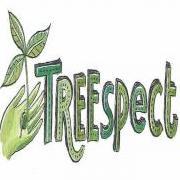As the title suggests this thread is intended to focus on one tree a month. It will hopefully be a celebration of our Native Trees in order to aid us all in learning as much as possible about them.
Our experiences working with them, fungal associations, pests and diseases, photographs, myths, legends and their place in the arts and culture. As said before a celebration and learning resource.
I thought we could use the Celtic Tree Ogham calendar as a starter whose origins lie with the Celtic tribes who migrated to Britain around 700 – 500bc. Trees were venerated by the ancients for their many gifts which were a mainstay of peoples lifestyles. Everybody was born under a particular tree (the same as our own zodiac sign) of which this months Tree ‘The Silver Birch’ was the first in the calender falling between 24th December and 20th January.
Hopefully this thread will work and we can collate all sorts of useful and interesting information about our native trees. I hope there are a few of you who feel the same.
Silver Birch (Betula Pendula)
Also known as ‘Lady of the woods’ but I’m sure there are many others around the country. What are they?
The name Birch is thought to be derived from the Sanskrit word ‘bhurga’ meaning ‘ a tree whose bark can be written upon’.
The Birch is Monoeccious (has male and female flowers on the same tree)
The Bark can be used as an antiseptic and a diuretic. If applied externally putting the fresh internal side of the bark against the skin it can relieve muscle pain. It can also be used to treat eczema.
Shafts of arrows were made of birch branches.
The roots of birch trees have mycorrhizal associations with various species of fungi. In these mutualistic or symbiotic relationships between trees and fungi, both partners in the association benefit from their interactions. One of the best known fungi associated with birch trees is the fly agaric (Amanita muscaria), while two edible boletes (Leccinum scabrum, L. versipelle) and the chanterelle (Cantharellus cibarius) also form mycorrhizal relationships with them. The names of some other fungi reflect a similar association with birches - Russula betularum and Cortinarius betuletorum - while the polypores Lenzites betulina and Piptoporus betulinus grow on the wood of dead birches. Another polypore, the tinder fungus (Fomes fomentarius) also grows on dead birches, with its hard, wood-like fruiting bodies reaching a large size and persisting for many years. These polypores all help to break down the tough cellulose of the wood, and by doing so make the nutrients in it available for other organisms. Not all fungi have mutually beneficial relationships with trees, however, and the witches' broom fungus (Taphrina betulina) is parasitic on birch trees, causing an abnormally dense growth of small twigs, which radiate from a point on a branch.
Theres a starter. So come on guys and galls lets have whatever you can muster on the Silver Birch. Photo’s, facts, anything you got.
Cheers Sean






















